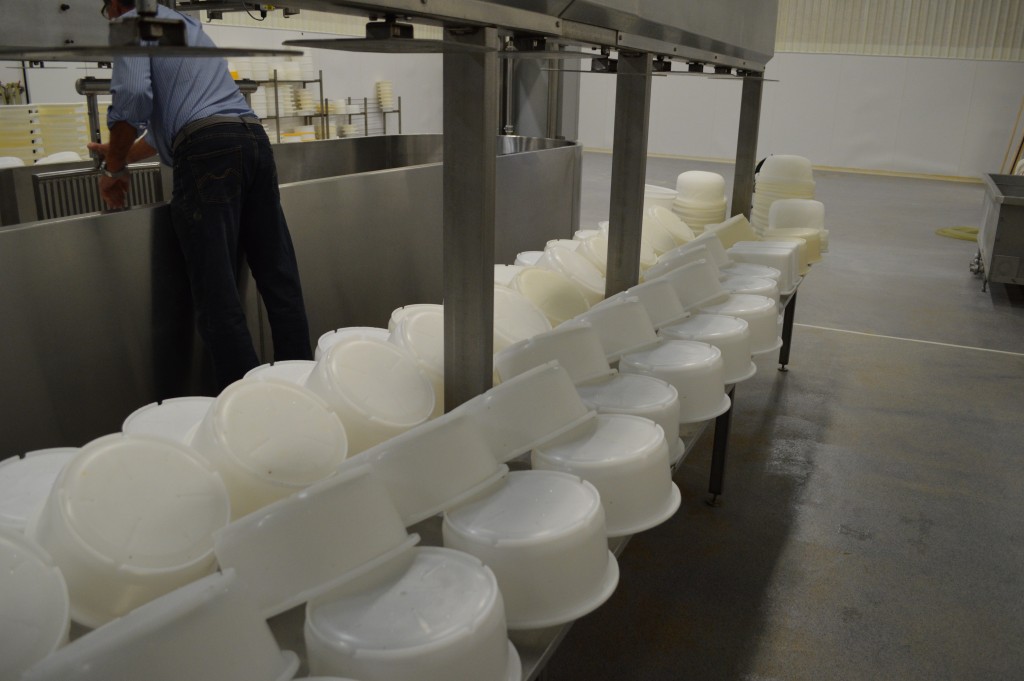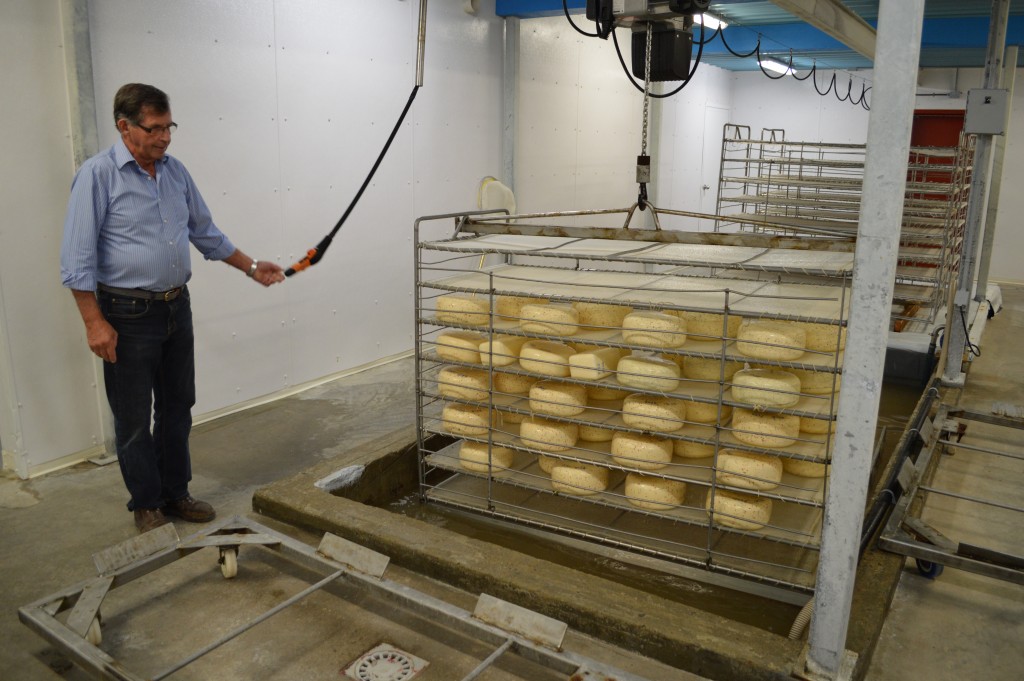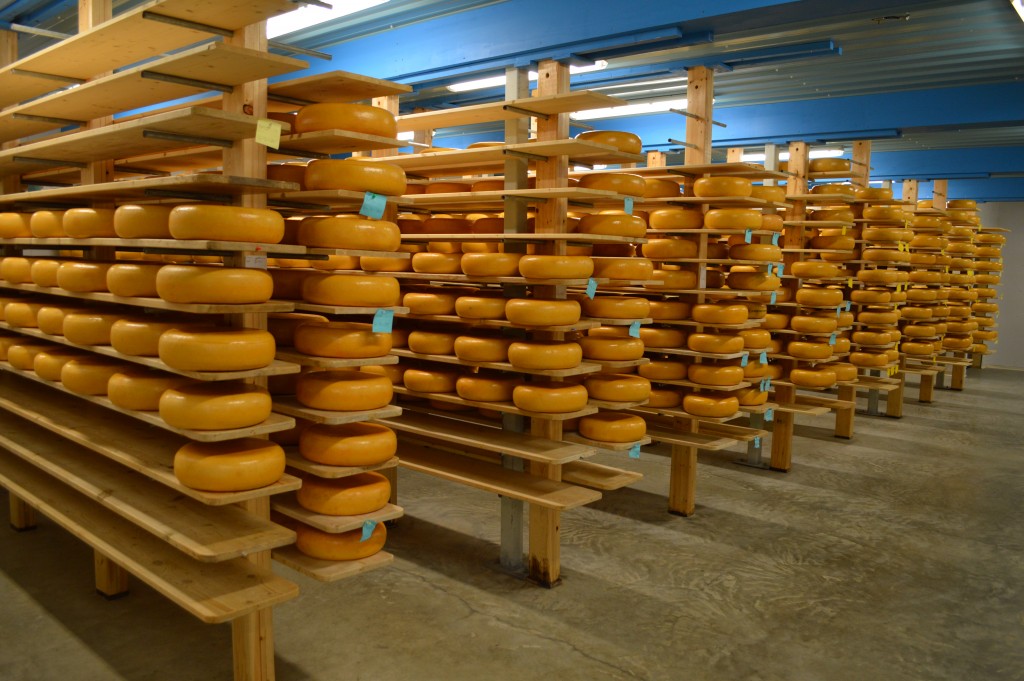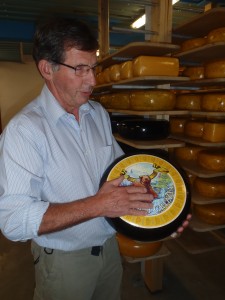 I have purchased, without exaggeration, tens of thousands of dollars of Sylvan Star cheese. Not for personal consumption, of course, but for the restaurants I’ve worked for over the past few years. The mac and cheese served from the Nomad food truck, for instance, was made with Sylvan Star medium Gouda. The grilled cheese sandwiches at Elm are currently made with a blend of medium, smoked, and aged Gouda. Rarely does a week pass without my purchasing at least a whole wheel of cheese from Sylvan Star.
I have purchased, without exaggeration, tens of thousands of dollars of Sylvan Star cheese. Not for personal consumption, of course, but for the restaurants I’ve worked for over the past few years. The mac and cheese served from the Nomad food truck, for instance, was made with Sylvan Star medium Gouda. The grilled cheese sandwiches at Elm are currently made with a blend of medium, smoked, and aged Gouda. Rarely does a week pass without my purchasing at least a whole wheel of cheese from Sylvan Star.
Jan Schalkwyk is the owner of Sylvan Star, and he was already a champion cheese-maker when he left Holland and came to Canada in 1995. He had fully intended to leave cheese-making behind him and simply run a dairy farm. He says he was compelled to return to the craft because of the quality of Gouda available in Alberta at the time. If that seems immodest, I direct you to the cheese section of your local supermarket.
The Sylvan Star Cheese Farm is a short drive off Highway 2, west on Highway 11 for about five minutes. I went there with some of the other cooks from Elm Café and Catering last week for a tour.
Behind every great cheese is great milk, and so it is with Sylvan Star: right outside their back door, maybe 100 meters away, is the Lac La Nonne Dairy, operated by Jan’s son. All of the milk for Sylvan Star cheese comes from here. It is a kind of vertical integration that gives Jan intimate knowledge of what the cows eat and how clean their stables are. He emphasizes that dairy cows must be fed only hay and silage, never grain, to produce the sweet, “soft” cream necessary for making quality cheese.
The milk for Sylvan Star cheese is not pasteurized, technically. It is heated to 60°C, which kills pathogens but doesn’t destroy all-important enzymes. Standard dairy pasteurization would heat the milk to 74°C or higher.
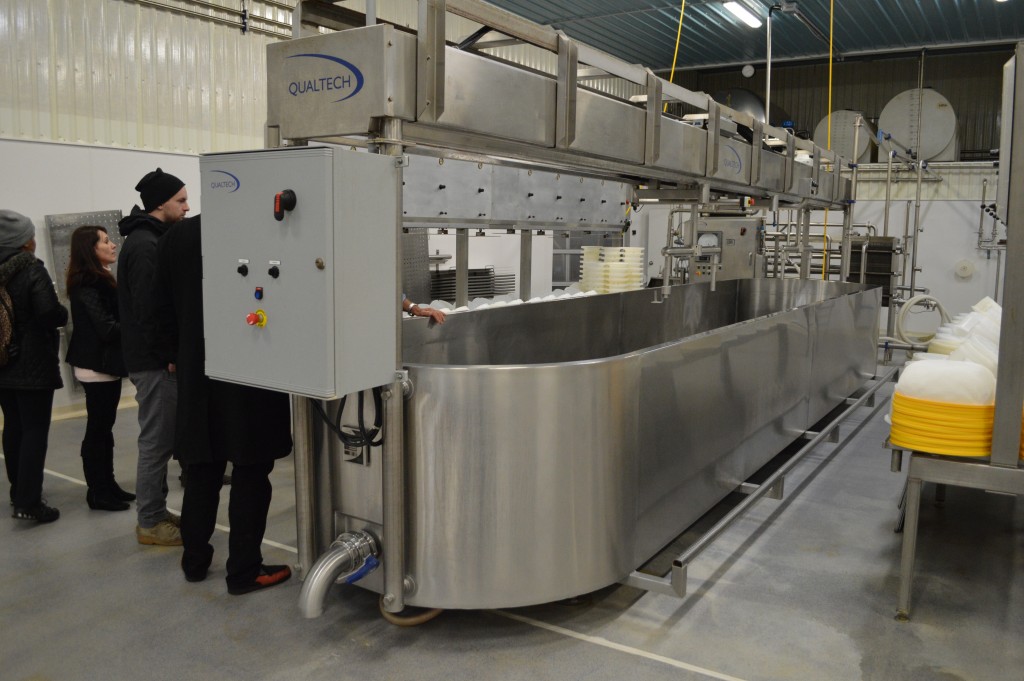 On cheese-making day the milk is warmed in a heat-exchanger to 30°C, then transferred by pipe into an 8,000 L vat. As soon as the first bit of warm milk enters the vat, Jan adds a bacterial culture. It takes 45 minutes for the heat exchanger to warm enough milk to fill the vat, and by this time the culture is already actively metabolizing lactose to create lactic acid. Once the vat is full, Jan adds rennet and lets the milk sit for about 45 minutes to coagulate and separate into curd and whey.
On cheese-making day the milk is warmed in a heat-exchanger to 30°C, then transferred by pipe into an 8,000 L vat. As soon as the first bit of warm milk enters the vat, Jan adds a bacterial culture. It takes 45 minutes for the heat exchanger to warm enough milk to fill the vat, and by this time the culture is already actively metabolizing lactose to create lactic acid. Once the vat is full, Jan adds rennet and lets the milk sit for about 45 minutes to coagulate and separate into curd and whey.
The curd is cut by grates of sharp blades that are mounted on rotating shafts that move back and forth over the vat. The blades gently pirouette through the soft curd, breaking it into smaller pieces and releasing whey.
At this point of the process some of the whey is pumped out of the vat and replaced with hot water from a tank. This raises the temperature of the solution, making the curds firmer, and also washes the curds and dilutes the whey around them. I didn’t know this until our tour, but this washing process is actually what makes Gouda Gouda. The washing removes some of the lactose and allows the bacterial culture to metabolize all of the remaining lactose without creating too much lactic acid, making a “sweet” cheese that is entirely lactose-free.
After the washing, two perforated steel sheets are placed into either end of the tank and mounted overhead. They slowly move towards the centre, gathering all the curds into the middle of the basin. Then another heavy, perforated sheet is rested on top of the curds to work out a bit more whey and make the curds drier and more manageable.
Then the curds are scooped up with fine mesh baskets, which are set into perforated buckets. In the mediocre photo below the baskets are at the far end of the table. They look like cream-coloured bowler hats.
The buckets are stacked and then weighed down by a pneumatic press. Jan says that the pressing doesn’t actually wring whey from the cheese: only rennet can do that. The pressing is to shape the cheese into the familiar wheels.
Once removed from the molds the wheels are recognizable as Gouda, but they are naked: pale white, without the friendly yellow waxing. At this stage they are also completely without salt.
To remedy this sodium deficiency the wheels are lined up on racks and submerged in a brine solution for up to two days. The brining inhibits the bacterial cultures, and of course seasons the cheese. Jan shoots for 1.5% salt content in his Gouda.
Next the cheese is covered with a breathable yellow wax. The waxing process actually takes four days. First the top half of the wheel is brushed with wax. This layer is allowed to dry, then the next day the wheel is flipped and wax is applied to the other side, after which the process is repeated.
The cheese is aged for anywhere from 2 months to 2 years, depending on the style. Mild Gouda, for instance, a soft, creamy style, only ages 2 months, while Grizzly Gouda, similar in texture to Parmigiano-Reggiano ages 2 years. The wheels sit on pine boards as they age, and every so often they need to be flipped and wiped with a mild chlorine solution so that mould doesn’t form under the cheese against the wood.
After aging, the famous Grizzly Gouda is sealed with a non-breathing black wax.
What is most remarkable about the Sylvan Star operation is the tiny labour force that is able to produce so much cheese. Jan personally does all the cheese-making – culturing, cutting, molding, et c – himself. He has a handful of part time employees that answer phones, flip the wheels in the warehouse, package finished product, and so on.
Here are some lightening-quick notes on a few of the Sylvan Star products.
Curds – I am a curd fan. I grew up in Ontario, and on road trips between Bright’s Grove and Brockville we would stop at a cheese factory in Belleville for bags of curd to snack on. I was thrilled to see Sylvan Star start selling cheese curds. To get the characteristic squeak leave them out of the fridge for a couple hours before consuming. I know that’s not technically food-safe. Just do it. For some reason the refrigerator kills the squeak.
Smoked Gouda – Sylvan Star smoked Gouda comes in mild and medium forms. They both have fantastic smoke flavour. They are best enjoyed on their own, on cheese boards, as the smoke flavour easily gets lost in sandwiches.
Mild and Medium Gouda – These are “everyday cheeses,” and I literally eat them every day. Relatively mild, they have great melting and baking properties. I use them in mac and cheese, grilled cheese, scallop potatoes, and sandwiches.
Flavoured Gouda – Sylvan Star makes dozens and dozens of flavoured cheeses: Gouda punctuated with everything from green peppercorns to nettle. I was skeptical at first, as it seemed a bit gimmicky, but most of the flavours are amazing. The chili pepper Gouda absolutely demolishes the peperonata cheese sold at the Italian Centre flavour-wise.
Cheddar – Sylvan Star is first and foremost a maker of Gouda. Their Cheddar is tasty but not as good as another Alberta-made cheddar: Franco’s. (Franco’s Cheddar suffers from drastic inconsistency season-to-season, but that’s a post for another day…)
Gruyère – Again, Sylvan Star is a Gouda-maker. Their Gruyère is good: it’s definitely sharper than their Gouda (because it doesn’t undergo the washing process described above) but to me it doesn’t have the characteristic flavour of Gruyère. It may be an esoteric matter of terroir…
Grizzly Gouda – I’m convinced that Sylvan Star’s Grizzly gouda is one of the best craft food products made in North America. People unfamiliar with Old World aged Gouda would be forgiven for thinking this was Parm. It is dry, hard, and breaks into fragments along fault lines. It is studded with incredible, crunchy flecks for which I know of no English word. In Italian they are called punti bianchi. I imagine there is a Dutch word as well. They are actually crystallized amino acids, not salt.
I think the Grizzly is best eaten on its own, broken into small pieces. It can also be shaved on top of salad or pasta, or it can be grated and baked on top of casseroles.
On most wheels of Grizzly I cut away about half an inch of cheese from the rind because it is too dry. This trim can be finely ground and blended with other cheese, but it is difficult to eat out of hand.
Anyways, thank you Jan and everyone else at Sylvan Star for doing what you do. I’m lucky to the point of absurdity that part of my job is getting to eat your cheese, and shave it on top of salads, and grate it onto casseroles, and stuff it into perogies…

